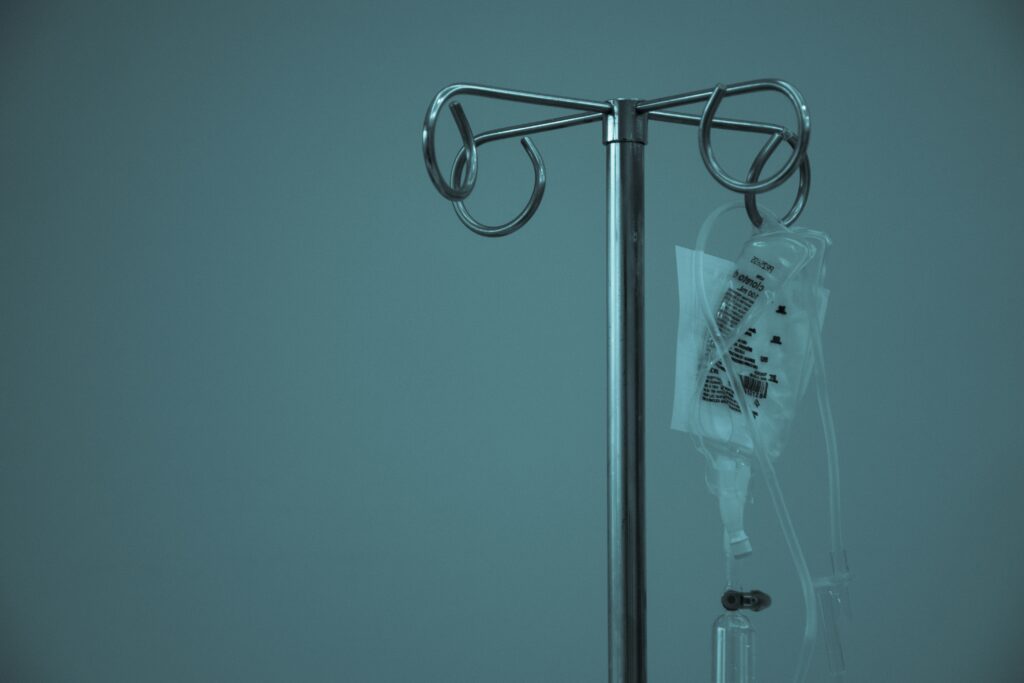XESSO Water-Based Creamy Lube, Unscented 8.3 Fl Oz, Thick White Gel-Like Slippery Glide, Hypoallergenic for Women, Men & Couples. Made in US & Discreet Package. Package May Vary
$14.99 (as of May 18, 2024 12:13 GMT +00:00 - More infoProduct prices and availability are accurate as of the date/time indicated and are subject to change. Any price and availability information displayed on [relevant Amazon Site(s), as applicable] at the time of purchase will apply to the purchase of this product.)Essential Oils by PURE AROMA 100% Pure Oils kit- Top 6 Aromatherapy Oils Gift Set-6 Pack, 10ML(Eucalyptus, Lavender, Lemon Grass, Orange, Peppermint, Tea Tree)
$9.98 (as of May 18, 2024 12:13 GMT +00:00 - More infoProduct prices and availability are accurate as of the date/time indicated and are subject to change. Any price and availability information displayed on [relevant Amazon Site(s), as applicable] at the time of purchase will apply to the purchase of this product.)MAJESTIC PURE Frankincense Essential Oil | 100% Pure and Natural Frankincense Oil for Pain Relief, Premium Grade Essential Oils for Diffuser, Aromatherapy, Skin, Face and Topical uses | 4 fl oz
$14.95 (as of May 18, 2024 12:13 GMT +00:00 - More infoProduct prices and availability are accurate as of the date/time indicated and are subject to change. Any price and availability information displayed on [relevant Amazon Site(s), as applicable] at the time of purchase will apply to the purchase of this product.)In “260 ‒ Men’s Sexual Health: why it matters, what can go wrong, and how to fix it,” you’ll find a comprehensive video discussion between Peter Attia MD and urologist Mohit Khera about men’s sexual health. They cover a wide range of topics, including erectile dysfunction, Peyronie’s disease, penile fractures, penile enlargement treatments, prolonged erections, premature ejaculation, anorgasmia, testosterone, and the role of testosterone in prostate cancer. They also address the prevalence of sexual dysfunction in men, the importance of seeking treatment, and how lifestyle factors play a role in sexual health. Throughout the discussion, they provide valuable information on diagnosis, pathophysiology, and various treatment options for these conditions. Whether you have specific concerns or simply want to learn more about men’s sexual health, this video is a must-watch.
Men’s sexual health is a significant topic that often goes undiscussed, but it affects a large percentage of the population. Did you know that 43% of women in the United States suffer from some degree of sexual dysfunction? Additionally, 30% of men in the U.S. have some degree of premature ejaculation or ejaculatory dysfunction, while 7-9% of men have Peyronie’s disease. Despite these numbers, many men suffer in silence and do not seek care, which can have a significant impact on their quality of life. This video aims to address these concerns, providing valuable insights into the diagnosis, treatment, and prevention of various sexual health conditions in men. So if you’re looking for expert advice and information on men’s sexual health, this discussion between Peter Attia MD and urologist Mohit Khera is here to help.
Understanding Men’s Sexual Health
Men’s sexual health is an important aspect of overall well-being and quality of life. Sexual dysfunction can have a significant impact on a man’s self-esteem, relationships, and overall happiness. In this article, we will explore the prevalence of sexual dysfunction in men, its impact on quality of life, and the barriers that prevent many men from seeking treatment. We will also delve into the causes and treatment options for erectile dysfunction, the benefits of daily Cialis, and the impact of aging on sexual health. Additionally, we will discuss the link between erectile dysfunction and cardiovascular disease, as well as the lesser-known condition known as Peyronie’s disease. Finally, we will touch on alternative treatments for erectile dysfunction and the importance of addressing men’s sexual health through lifestyle factors.
Prevalence of sexual dysfunction in men
Sexual dysfunction is more common than one might think, with a significant proportion of men experiencing some form of sexual difficulty at some point in their lives. Studies have shown that about 43% of women in the United States suffer from some degree of sexual dysfunction, while approximately 30% of men in the U.S. have some degree of premature ejaculation or ejaculatory dysfunction. Moreover, around 7-9% of men in the U.S. have Peyronie’s disease, a condition characterized by penile curvature. Despite the high prevalence of sexual dysfunction, many men suffer in silence and do not seek care due to various barriers.
Impact of sexual dysfunction on quality of life
Sexual dysfunction can have a profound impact on a man’s quality of life. It can lead to feelings of frustration, anxiety, and depression. It can strain relationships and cause significant emotional distress. Men experiencing sexual difficulties may feel a sense of inadequacy or shame, which can further worsen their symptoms. It is important to recognize the psychological toll that sexual dysfunction can have and to offer support and understanding to those who may be suffering.

Barriers to seeking treatment
Many men suffering from sexual dysfunction do not seek care due to a variety of barriers. Embarrassment and shame are common reasons why men hesitate to discuss their sexual health issues with healthcare providers. Additionally, there may be a lack of awareness about where to go for help or a belief that their condition is untreatable. Some men may simply dismiss their symptoms as a normal part of aging or may be unaware that effective treatment options are available. It is crucial to break down these barriers and encourage open discussions about men’s sexual health.
Erectile dysfunction and its grading
Erectile dysfunction (ED) is one of the most common forms of sexual dysfunction in men. It is characterized by the inability to achieve or maintain an erection sufficient for penetration and orgasm. ED can be graded based on the severity of the dysfunction. The grading system takes into account the ability to achieve and maintain an erection, as well as the ability to engage in sexual intercourse. Understanding the grading of ED can help healthcare providers determine the most appropriate treatment options for their patients.

Causes and Treatment of Erectile Dysfunction
Aging and venous leak are two common causes of erectile dysfunction. As men age, they may experience muscle atrophy and venous leak in the penis, leading to difficulty in achieving and maintaining erections. However, it’s important to note that age itself is not a significant factor in the development of erectile dysfunction. Other underlying health conditions and lifestyle factors may contribute to the development of ED.
Phosphodiesterase inhibitors such as Viagra and Cialis are commonly prescribed medications for the treatment of erectile dysfunction. These medications work by increasing cyclic GMP levels, which dilate blood vessels and help maintain erections. Other treatment options for ED include medication such as Trimix, penile banding, injections, and penile prostheses. It is important to discuss these options with a healthcare provider to determine the most suitable treatment plan.
The Benefits of Daily Cialis
Daily Cialis has shown to have several benefits in maintaining penile health. It has been shown to promote hypertrophy of the cavernosal smooth muscle, which plays a crucial role in maintaining erectile function. Daily Cialis has a conversion rate of 1.6, meaning that taking 5mg daily is equivalent to having 8mg in the system. It has also been FDA approved for the treatment of benign prostatic hyperplasia (BPH) and pulmonary hypertension. Additionally, daily Cialis use has shown significant improvement in endothelial dysfunction, which can have a positive impact on overall cardiovascular health. The availability of generic versions of Cialis has made it more accessible and affordable for men seeking treatment for erectile dysfunction.

The Impact of Aging on Sexual Health
Aging can affect sexual health in various ways. The refractory period, the time between orgasms, tends to increase with age, possibly due to higher prolactin levels. Older men may also experience difficulty in achieving erections and longer refractory times. These changes may be attributed to natural hormonal fluctuations and age-related physiological changes. Interestingly, there may be an evolutionary advantage to decreased sexual function in older men, as it reduces the risk of genetic mutations in sperm. However, overall health and lifestyle factors play a significant role in maintaining sexual function as men age. Taking steps such as improving diet, exercising regularly, getting enough sleep, and reducing stress can help improve sexual function in older men.
The Link Between Erectile Dysfunction and Cardiovascular Disease
There is a strong link between erectile dysfunction and cardiovascular disease. Men with erectile dysfunction have been found to have a higher risk of experiencing a heart attack or stroke within seven years. It is crucial for healthcare providers to discuss sexual dysfunction with their patients, as it can serve as an indicator of underlying cardiovascular issues. Early diagnosis and treatment of cardiovascular disease can potentially improve both sexual and overall health outcomes. It is important for men to feel comfortable discussing their sexual health concerns with their healthcare providers to ensure prompt diagnosis and appropriate management.

Understanding Peyronie’s Disease
Peyronie’s disease is a condition characterized by the development of fibrous scar tissue inside the penis, leading to penile curvature during erections. The exact cause of Peyronie’s disease is not fully understood, but it is thought to be associated with trauma during sexual activity. It is more prevalent in older men. Diagnosis of Peyronie’s disease is typically based on physical examination and medical history. Treatment options include medication, surgery, and the use of traction devices to straighten the penis. It is important to catch Peyronie’s disease during the active phase, as early intervention can help prevent further progression of the disease.
Traction Devices for Penile Health and Enlargement
Traction devices, also known as penis extenders, have gained popularity as a non-surgical method for penile health and enlargement. These devices work by applying gentle, continuous tension to the penis, which stimulates tissue growth and increases length and girth. Recommended usage involves wearing the device for a certain amount of time each day, typically 30 minutes, and gradually increasing the tension over time. Studies have shown that regular use of traction devices can lead to significant improvements in penile length, with some participants experiencing up to a 2 centimeter increase. In addition to their use for penile enlargement, traction devices can also be used as a treatment option for Peyronie’s disease. However, it is important to note that the use of traction devices for penile health and enlargement is considered off-label and can be expensive. It is recommended to consult with a healthcare provider before using these devices.
Diagnosis and Management of Erectile Dysfunction
Diagnosing and managing erectile dysfunction involves a comprehensive approach. Diagnostic tools such as ultrasound can be used to measure end diastolic and peak systolic numbers, which provide valuable information about the severity and location of the problem. Significant asymmetry in these numbers is not common, but can occur. Low peak systolic velocity in young men may be an indicator of underlying cardiovascular risk. Endothelial function, which plays a crucial role in erectile function, can be measured using devices such as the Endo Pat 2000. The results of these diagnostic tests guide management decisions and treatment options. Penile injections using medications such as Trimix can be effective for ED treatment, but careful monitoring is required to avoid the risk of priapism. In cases where other treatment options have failed, penile implants may be considered. Penile implant surgery is generally safe when performed by an experienced surgeon, but carries some risks, including infection and malfunction. It is important for patients considering penile implant surgery to choose a surgeon who has extensive experience in performing the procedure. Additionally, treatment of priapism, a prolonged and painful erection, requires immediate medical attention and may involve the use of medications or surgery.
Alternative Treatments for Erectile Dysfunction
In addition to traditional treatment options, alternative therapies have gained attention in the field of erectile dysfunction. Gainswave shockwave therapy is one such alternative treatment. This therapy involves the use of shockwaves to induce trauma to the penis, promoting neoangiogenesis and improving erectile dysfunction symptoms. The procedure is typically well-tolerated and does not require anesthesia. Different types of shockwave machines, including those with focal or radial shocks, are available for ED treatment. While this therapy has shown effectiveness for some patients, it may not work for all individuals. Stem cell therapy and platelet-rich plasma (PRP) therapy are other alternative treatment options for erectile dysfunction. These therapies involve the use of stem cells or platelets derived from the patient’s own body to promote tissue regeneration and improve erectile function. However, it is important to note that these therapies are not FDA-approved and may require seeking treatment outside of the country. Current research and evidence on these alternative therapies are limited, and more studies are needed to establish their effectiveness and safety.
Importance of addressing men’s sexual health
Men’s sexual health is an important aspect of overall well-being, and addressing sexual dysfunction is crucial for maintaining a high quality of life. The prevalence of sexual dysfunction in men is high, but many men do not seek treatment due to embarrassment or lack of knowledge about where to go for help. It is important to break down the barriers that prevent men from seeking care and to provide education and support for those experiencing sexual difficulties. Effective treatment options are available for erectile dysfunction and other forms of sexual dysfunction, and addressing these issues can lead to improved overall health and well-being. Additionally, lifestyle factors such as diet, exercise, sleep, and stress reduction play a significant role in maintaining sexual health. By prioritizing men’s sexual health and addressing the underlying causes of sexual dysfunction, we can help men lead happier, healthier lives.






